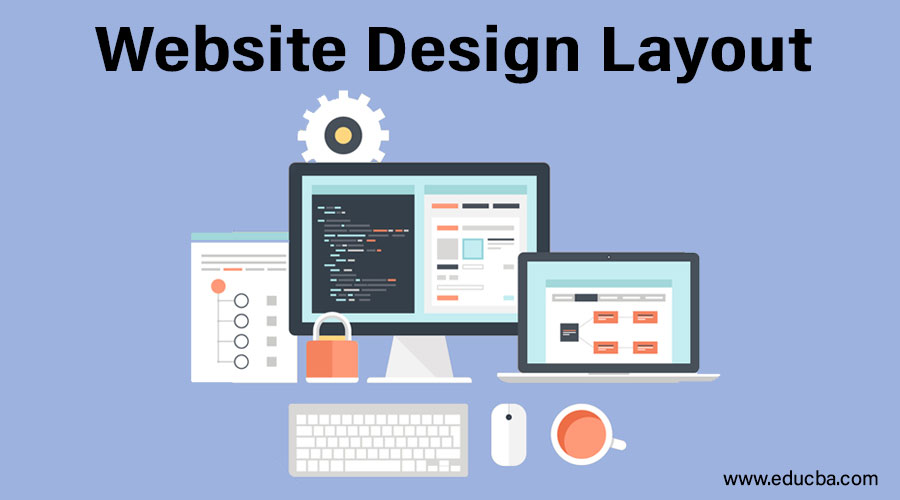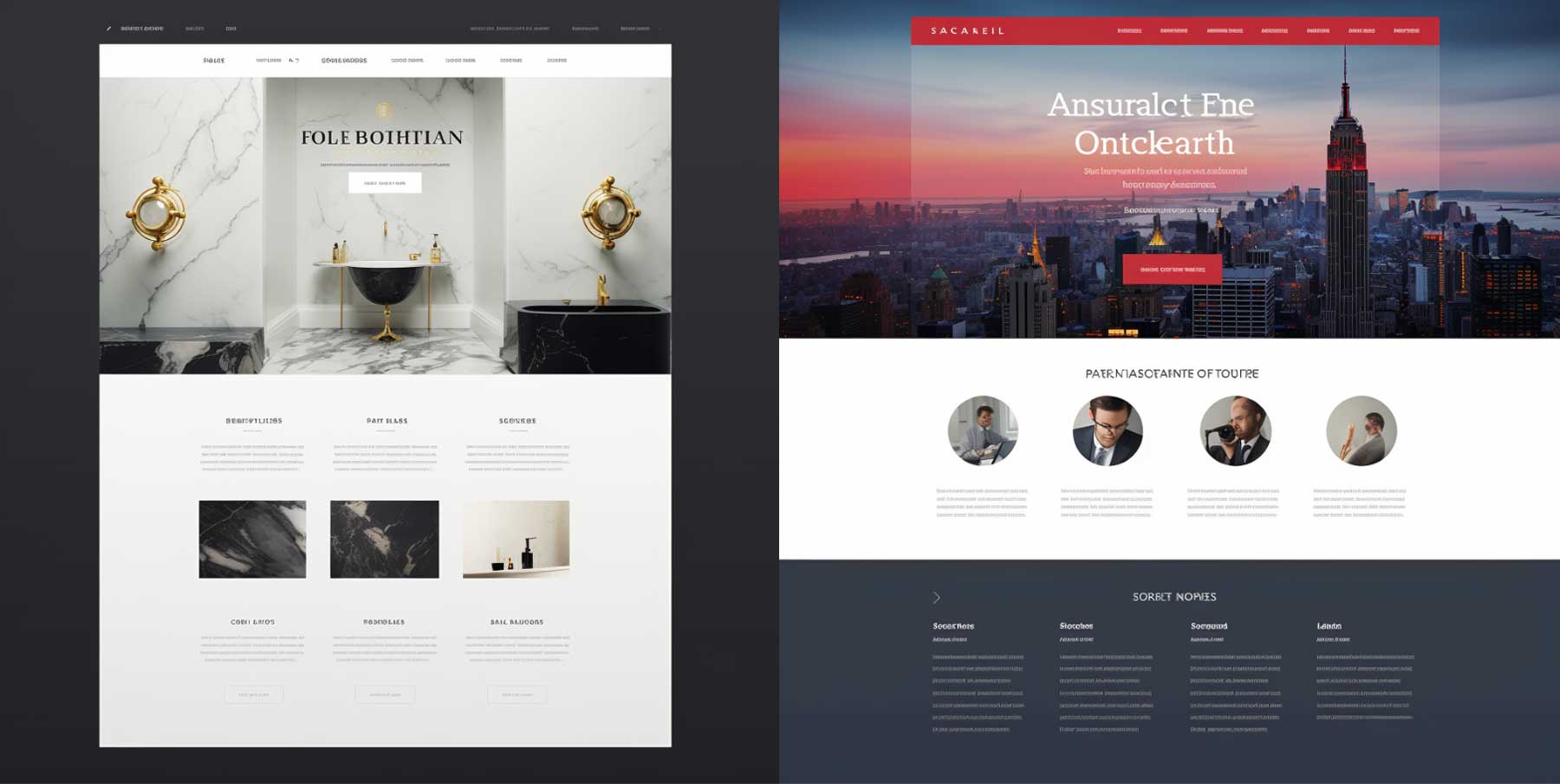Modern Internet Site Style That Records Focus and Transforms
In a progressively digital landscape, modern website design has arised as a pivotal factor in catching individual focus and driving conversions. By purposefully using visual pecking order, receptive designs, and engaging interactive aspects, designers can produce experiences that not only attract site visitors yet likewise help with purposeful communications. In addition, efficient call-to-action strategies play a crucial function in guiding individuals toward wanted results. As we explore these vital components, it becomes clear that recognizing their interaction can dramatically impact an internet site's efficiency and individual fulfillment. What are the crucial elements that absolutely make a distinction?
Value of Visual Power Structure
Visual pecking order is a critical aspect in internet site layout, as it overviews individuals' interest and boosts their overall experience. By purposefully arranging material, designers can route customers to the most essential info initially, therefore enhancing interaction and enhancing functionality.
Including a logical flow in content plan is necessary; for example, placing the most crucial details at the top of a page cultivates immediate recognition. Consistent usage of typography, such as varying font dimensions and styles, aids establish a clear material structure. This company not only aids in navigating but also constructs trust, as users really feel a lot more comfy when they can conveniently find what they are searching for.
Ultimately, a well-executed visual power structure not just improves visual charm yet likewise considerably impacts customer actions. By prioritizing vital aspects and making sure a smooth experience, developers can successfully transform site visitors right into customers, strengthening the importance of this foundational design concept in modern-day web site growth.
Responsive Layout for All Devices
Developing a smooth experience throughout different devices is necessary in today's digital landscape, where users accessibility web sites from smart devices, desktops, and tablets alike. Receptive design is a vital strategy that ensures internet sites adapt fluidly to different display orientations, resolutions, and dimensions. By utilizing versatile grids, photos, and CSS media queries, designers can produce layouts that preserve visual integrity and performance, no matter of the gadget being used.
The relevance of receptive style prolongs past appearances; it straight impacts customer interaction and conversion prices. A web site that functions well on all gadgets urges longer gos to and lowers bounce prices, as users are much more most likely to connect with material that is simple to browse. Moreover, internet search engine, specifically Google, prioritize mobile-friendly sites in their positions, making receptive style an essential element of seo (SEARCH ENGINE OPTIMIZATION)
Including responsive layout not just boosts customer experience yet additionally streamlines the advancement procedure. By creating a single website that functions across gadgets, organizations can conserve time and resources contrasted to developing separate mobile and desktop computer variations. Inevitably, responsive style is a fundamental method for contemporary internet site layout, making certain accessibility and complete satisfaction for all individuals, regardless of their device.
Engaging Interactive Elements
While a receptive layout prepares for a practical internet site, including interesting interactive aspects is crucial for catching individual interest and promoting much deeper links. Website Design. Interactive components, such as animations, quizzes, and clickable infographics, produce an extra vibrant individual experience, urging site visitors to spend even more time on the website
Integrating interactive functions can likewise direct users via complex information, making it easier to digest web content. Interactive sliders can highlight product variations, while embedded videos can supply demonstrations or reviews that resonate even more than fixed images or text. Gamification strategies, like benefits for engaging or finishing jobs with web content, can improve individual motivation and retention.
Effective use of interactive aspects not only improves the customer experience but can likewise lead to greater conversion prices. It is necessary to stabilize interactivity with efficiency; extremely intricate features may hinder website rate, negatively affecting user complete satisfaction.
Streamlined Navigating Practices
Effective navigation is a foundation of any effective internet site, as it directly affects individual experience and content ease of access. Structured navigating techniques make sure that customers can quickly locate information, boosting their communication with the site. A pop over to this site well-structured navigating menu need to be intuitive and straightforward, typically including a restricted number of primary categories to prevent frustrating visitors.
To accomplish structured navigation, developers must prioritize a hierarchical structure that rationally organizes content. Executing breadcrumb tracks can supply users with context about their present location within the website, permitting for smooth backtracking. Additionally, using drop-down menus can successfully conserve space while still offering accessibility to subcategories.
Receptive design useful reference is critical, as navigation ought to be functional throughout all devices (Website Design). Mobile individuals, specifically, advantage from touch-friendly menus and retractable sections that keep functionality without jeopardizing appearances

Efficient Call-to-Action Methods
A well-crafted call-to-action (CTA) is essential for assisting customers towards desired end results on a web site, as it encourages them to engage with material or buy. To optimize their performance, CTAs ought to be clear, engaging, and strategically placed throughout the website.
First, use action-oriented language that connects urgency or value, such as "Start," "Sign up with Currently," or "Insurance claim Your Discount rate." This language not just motivates individuals yet also establishes clear expectations regarding the following steps.
Second, think about layout components; CTAs ought to stand apart visually with contrasting shades, adequate whitespace, and noticeable positioning. A button that is very pop over here easy to see and click boosts the likelihood of customer interaction.
Furthermore, customizing CTAs based on individual habits or demographics can dramatically improve involvement. Customized messages reverberate extra with individuals, driving greater conversion prices.

Verdict
These components collectively boost individual experience, making sure that site visitors stay engaged and inspired to explore material additionally. By focusing on these layout principles, services can substantially improve customer retention and conversion rates, eventually leading to greater success in the electronic landscape.
In a progressively digital landscape, contemporary web site style has actually arised as a crucial aspect in catching individual interest and driving conversions.Aesthetic hierarchy is an important aspect in internet site layout, as it overviews individuals' attention and boosts their general experience.The value of receptive design extends past looks; it directly impacts individual involvement and conversion rates.Integrating responsive design not just enhances individual experience but likewise enhances the growth process. Ultimately, responsive design is a basic method for modern-day site design, guaranteeing accessibility and satisfaction for all customers, regardless of their tool.
Comments on “How to Improve Your Website Design for Better Conversion Rates”